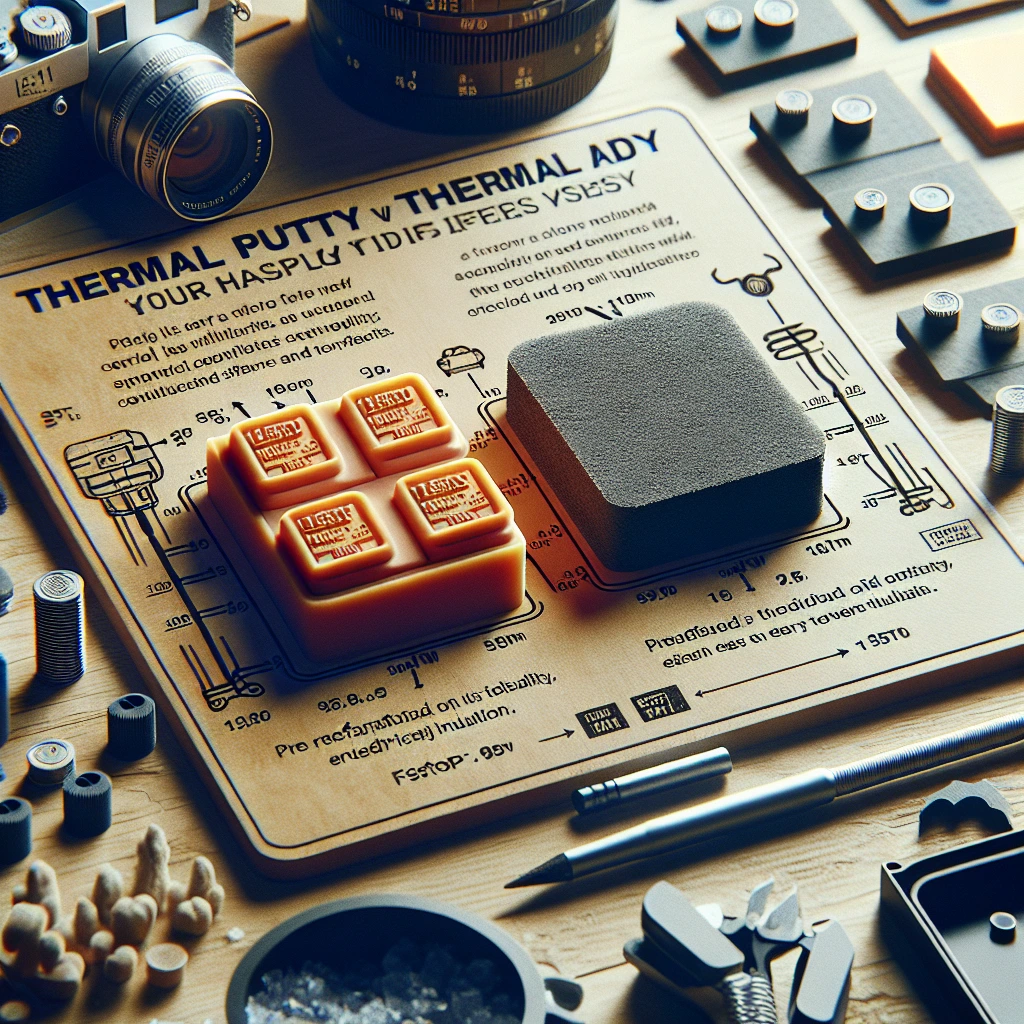Thermal putty and thermal pads are both thermal interface materials (TIMs) used to improve heat transfer between heat sources and heat sinks. However, they have distinct characteristics and advantages that make thermal putty a preferable choice in certain applications. Here’s a comparison of thermal putty and thermal pads, highlighting why thermal putty might be the better option.
- Product Catalog

Table of Contents
Thermal Putty🔗
Characteristics:
- Moldability: Thermal putty is a soft, moldable material that can easily fill gaps and conform to uneven surfaces between heat sources and heat sinks. This flexibility makes it ideal for applications with high mechanical tolerances.
- Thermal Conductivity: It offers strong thermal conductivity and electrical insulation properties, maintaining performance over repeated heating and cooling cycles.
- Application: Thermal putty can be applied using dispensing machines, making it suitable for high-volume applications. It is particularly useful in scenarios where the exact thickness of the TIM needs to be adjusted on-site.
Advantages:
- Versatility: Its ability to conform to various shapes and fill gaps of different sizes makes it more versatile than pre-cut thermal pads.
- Cost-Effectiveness: Thermal putty can be more cost-effective over time due to its longevity and reduced need for replacement compared to thermal pads that may dry out or lose efficiency.
- Performance at High Temperatures: It retains its thermal properties better at higher temperatures compared to some thermal pads.
Thermal Pads🔗
Characteristics:
- Pre-Fabricated: Thermal pads are solid, pre-fabricated materials that come in various thicknesses and sizes. They are typically made from silicone or other flexible materials enhanced with thermally conductive fillers.
- Ease of Use: They are easy to install by simply peeling off a protective film and placing them between the heat source and sink.
Advantages:
- Simplicity: Easy to handle and apply without the mess associated with pastes or putties.
- Electrical Insulation: Provides good electrical insulation, making them suitable for electronic devices where voltage is present across the interface.
Disadvantages Compared to Putty:
- Limited Conformability: Thermal pads may not conform as well to irregular surfaces or fill gaps as effectively as thermal putty.
- Potential for Drying Out: Over time, thermal pads can dry out, reducing their effectiveness in heat transfer.
- Fixed Thickness: The pre-set thickness of thermal pads can be a limitation in applications requiring precise thickness adjustments.
Conclusion: Why Thermal Putty Wins
Thermal putty offers several advantages over thermal pads, particularly in applications requiring flexibility, high mechanical tolerance, and long-term reliability. Its ability to mold into various shapes and fill uneven gaps makes it a versatile choice for complex assemblies. Additionally, its cost-effectiveness and superior performance at high temperatures provide significant benefits in maintaining efficient heat dissipation over time.While thermal pads are easier to apply and provide good electrical insulation, their limitations in conformability and potential for drying out make them less suitable for applications demanding precise heat management solutions. Therefore, in scenarios where adaptability and long-term performance are critical, thermal putty emerges as the superior option.
LiPOLY TIM Technology : Thermal Solutions